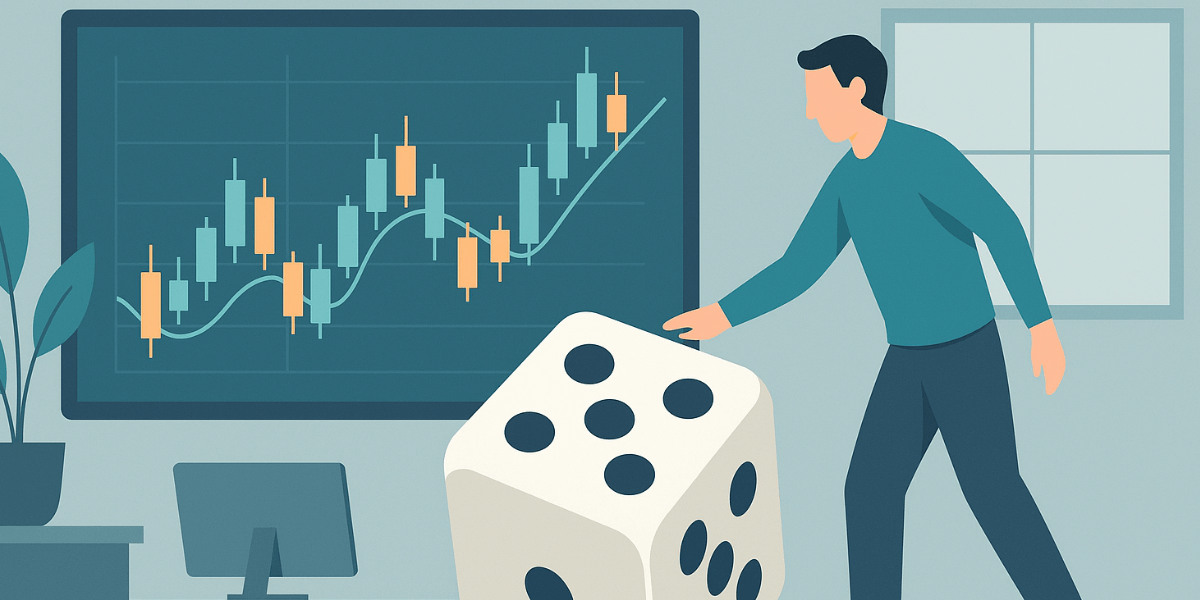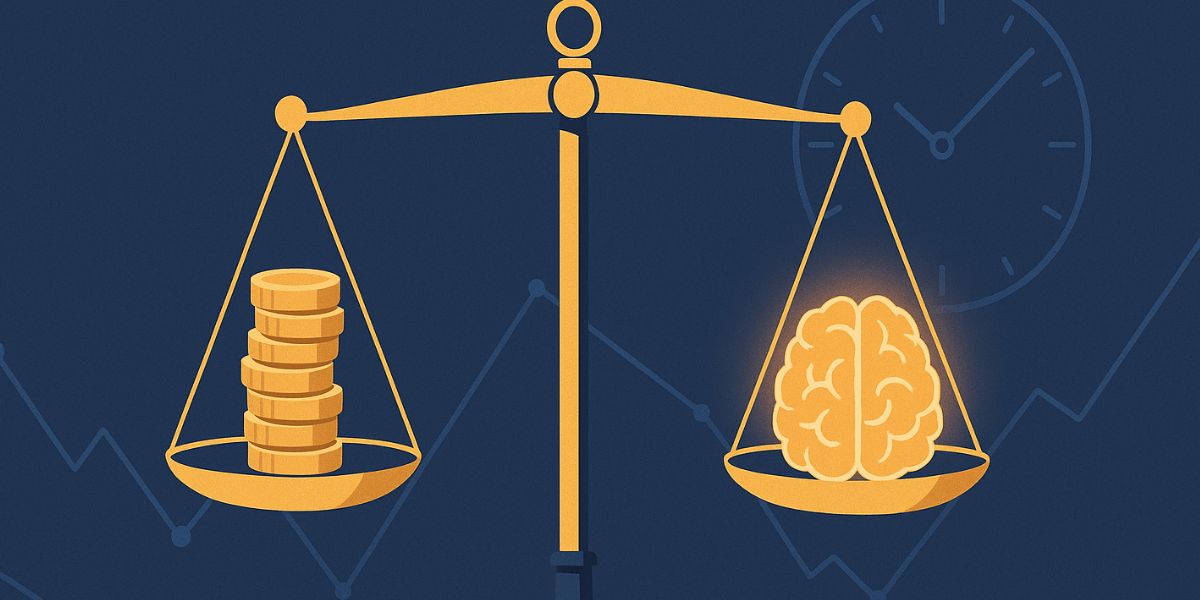Every trader has faced it: the slow bleed of a position that was supposed to turn around “any minute now.” The rational part of your mind knows the trade is invalidated, but your finger hesitates to click close. Maybe it’s pride, maybe it’s fear, maybe it’s hope — but beneath those emotions lies a deeper psychological architecture that governs risk perception, self-identity, and pain avoidance. This silent struggle is not about charts or indicators; it’s about the mind’s complex relationship with loss.
In the world of trading, discipline is preached as the holy grail. Yet, even the most system-driven traders occasionally violate their own rules. They hold losing trades longer than planned, convinced that waiting “just a little longer” might restore balance. Why do intelligent, rational individuals act against their own strategies? The answer lies at the intersection of neuroscience, behavioral economics, and emotional conditioning.
This article unpacks the psychological biases behind holding onto losers, examining how hope, fear, ego, and cognitive dissonance interact to create one of the most consistent behavioral errors in trading. By understanding these internal forces, traders can develop awareness and systems to prevent emotional sabotage — transforming loss into information instead of identity.
The Emotional Architecture of Loss
Humans are not wired for trading. Our evolutionary psychology is optimized for survival, not probability management. In the wild, persistence often led to success — holding on to a goal despite adversity increased the odds of survival. In markets, that same persistence can become self-destruction. The instinct to endure morphs into an inability to accept defeat.
Loss Aversion: The Root of the Problem
Loss aversion, first articulated by Kahneman and Tversky in prospect theory, states that people feel the pain of loss roughly twice as strongly as they feel the pleasure of an equivalent gain. In practice, this means a trader will risk far more psychological energy avoiding a $1,000 loss than they will feel satisfaction from a $1,000 profit. The result is asymmetrical behavior: cutting winners short to “lock in gains” while letting losers run to “avoid realizing pain.”
Loss aversion does not manifest only in trading; it permeates every domain of human decision-making. But markets amplify it. Price movements quantify loss in real time, creating a feedback loop that keeps the trader fixated on the number. Closing a losing position converts potential loss into permanent loss, forcing emotional confrontation. By holding, the trader delays that confrontation — the loss remains “unrealized,” and thus psychologically easier to tolerate, even as it grows larger.
Hope vs. Reality
Hope is the emotional anesthetic that numbs traders from pain. When a position moves against them, hope reframes the narrative: “The fundamentals are still good,” “It’s oversold,” “It just needs time.” Each justification preserves psychological comfort at the cost of rational decision-making. The longer the loss persists, the stronger the narrative must become to maintain coherence. Eventually, the trader is no longer managing risk — they’re managing emotion.
Cognitive Biases That Trap Traders
Holding onto losing trades is not merely emotional; it’s cognitive. The human mind uses mental shortcuts (heuristics) to make fast decisions, but in trading, these shortcuts backfire. Below are the key biases that explain why traders refuse to let go.
1. The Sunk Cost Fallacy
When a trader invests time, energy, or capital into a position, those resources become psychologically “owned.” Selling at a loss forces an acknowledgment that those resources were misallocated. The mind rebels against this by rationalizing continued commitment: “I can’t quit now — I’ve already lost too much.” This fallacy transforms rational exit points into emotional barriers. Traders continue holding because closing would mean admitting that previous effort was wasted.
2. Confirmation Bias
Once a trader forms a belief (“This stock will rebound”), they subconsciously filter incoming information to support that belief. Bearish news gets minimized or reframed; bullish scraps are magnified. Social media and algorithmic news feeds reinforce this bias by curating content aligned with prior preferences. As a result, the trader’s mental ecosystem becomes an echo chamber, amplifying conviction while silencing doubt — until the market delivers the final verdict.
3. Anchoring Bias
Anchoring occurs when the brain fixates on an initial reference point — the entry price. Every subsequent judgment or decision is distorted by that anchor. Traders think in terms of “getting back to breakeven” instead of reassessing value based on new conditions. This attachment to a meaningless number (the entry) leads to irrational positioning. Markets evolve, but the mind clings to the past.
4. The Endowment Effect
Simply owning something increases its perceived value. In behavioral economics, this is known as the endowment effect. The act of buying a stock or pair makes it feel special, unique, “yours.” Selling it feels like giving up a part of yourself. In trading, this sense of attachment clouds objectivity — traders evaluate owned assets more favorably than identical unowned ones, creating emotional inertia.
5. Ego and Identity Fusion
Many traders unconsciously fuse their identity with their performance. A profitable trade affirms competence; a losing one feels like personal failure. This ego-attachment transforms market randomness into a referendum on self-worth. Closing a losing position becomes existential — not just financial. The trader is not cutting a loss; they are admitting “I was wrong.” Ego defends itself through denial, delay, and deflection, prolonging exposure to damage.
The Neurochemistry of Denial
When a trader experiences unrealized losses, their brain activates regions associated with physical pain — particularly the anterior insula. This overlap explains why losses “hurt.” However, the brain also has a built-in defense: denial. By reframing, rationalizing, or ignoring the loss, it releases dopamine, temporarily reducing discomfort. This relief reinforces avoidance, creating a reward loop for inaction. Each time the trader avoids closing a losing trade, the brain learns that denial feels better than acceptance.
Ironically, this neurological mechanism mirrors addiction pathways. The trader “needs” to believe the position will recover, not for profit, but for psychological equilibrium. Each small uptick in price delivers a dopamine hit of false hope, strengthening the cycle.
The Time Dimension: How Paralysis Evolves
Holding a losing trade rarely happens in a single moment of defiance. It unfolds gradually through distinct emotional stages:
- Shock: The position moves unexpectedly. The trader is surprised but rationalizes it as noise.
- Justification: They seek reasons to stay in — “It’s just a retracement.”
- Denial: The trade hits the stop level, but the trader widens it “temporarily.”
- Hope: Every minor bounce feels like redemption; the trader visualizes recovery.
- Despair: The account drawdown deepens; emotional exhaustion sets in.
- Capitulation or Collapse: Either they finally close at a massive loss or get margin-called.
This time-based decay is critical: paralysis thrives on incremental rationalization. No single choice feels catastrophic, but the cumulative effect is disastrous.
The Social Factor: Public Accountability and Pride
In the age of online trading communities, public trade calls can intensify the hold bias. Admitting a losing trade publicly feels humiliating. Traders become invested not only in the position but in defending their narrative. Confirmation bias becomes social — traders curate echo chambers that validate their pain. Pride transforms temporary mistakes into prolonged crises.
The Economic Illusion of “It’s Only Unrealized”
Language shapes perception. Phrases like “unrealized loss” or “paper loss” create semantic distance between trader and damage. But unrealized losses are very real; they simply haven’t been acknowledged. This illusion allows denial to masquerade as patience. The longer a position stays open, the deeper the illusion becomes — and the more dangerous the psychological inertia.
Behavioral Economics: The Utility Curve of Pain
According to behavioral finance, the relationship between objective loss and subjective pain is nonlinear. A $100 loss feels unpleasant, but a $1,000 loss doesn’t feel ten times worse — it feels closer to infinite. As losses deepen, emotional processing shuts down. The trader enters a numbed state of resignation, often described as “I stopped caring.” This is not indifference but overload: the nervous system protecting itself from further pain signals. Unfortunately, this same numbness delays corrective action.
Why Professional Traders Cut Losers Fast
Institutional traders aren’t immune to emotion; they’ve simply externalized discipline through structure. Risk managers, position limits, and pre-defined stop protocols automate loss acceptance. The decision to cut is delegated to systems before emotion can interfere. Retail traders, lacking such guardrails, rely on self-policing — an unreliable defense against limbic reflexes. Professionals understand a fundamental truth: you can’t control the market, only your exposure to it.
Reframing Loss: From Punishment to Data
The path to breaking the hold habit begins with cognitive reframing. Losses must be viewed as tuition, not trauma — data points that refine probability models. This reframing converts emotional pain into analytical feedback. To achieve it, traders must decouple outcome from identity and redefine success as process adherence, not profit per trade. The question shifts from “Did I win?” to “Did I execute correctly?”
Systemic Solutions to Holding Bias
1. Pre-Commitment Devices
Set stop-losses at the time of entry and disable manual editing. Use trading platforms that lock modification beyond a defined tolerance. This prevents emotional tampering once pain begins.
2. Structured Journaling
Maintain a trade log that records why you held, how long, and what emotion dominated. Over time, patterns of justification emerge. Awareness is the first step to self-interruption.
3. Position Sizing Discipline
Traders overhold when losses threaten identity-level damage. By risking less per trade (1–2%), losses become tolerable, reducing the emotional need to avoid realization.
4. Use of Automation and Alerts
Automate stop execution or create third-party alerts that notify when thresholds are crossed. This inserts friction between emotion and execution, restoring objectivity.
5. Detachment Routines
Post-trade rituals—like stepping away, breathing, or writing a summary—help reset emotional equilibrium. Detachment prevents loss-induced tunnel vision and restores perspective.
The Paradox of Control
Holding a losing trade often masquerades as control — “I’m managing it.” In truth, it’s surrender. Control is not about clinging to the outcome; it’s about maintaining agency over the process. The paradox is that true control requires surrendering to pre-defined limits. Letting go is the highest form of discipline, not weakness.
The Recovery Framework
Breaking the habit of holding losers demands a structured recovery plan:
- Step 1: Admit Recurrence. Accept that this pattern is behavioral, not situational. It won’t disappear after one fix.
- Step 2: Audit Historical Trades. Quantify average hold times, recovery frequency, and drawdown ratio for losing vs. winning trades.
- Step 3: Create “If-Then” Scripts. For example: “If trade reaches -1R, then exit immediately, no re-entry until review.”
- Step 4: Simulate Discipline. Backtest exit rules repeatedly until the neural discomfort subsides.
- Step 5: Reward Compliance, Not Outcome. Reinforce correct execution through journaling or tangible rewards, even on losing days.
Conclusion
Holding a losing trade too long is not a flaw in strategy; it’s a flaw in emotional design. It reflects the timeless tension between logic and identity, between intellect and survival instinct. By decoding the psychological and neurological mechanisms that fuel denial, traders can replace avoidance with awareness and panic with protocol. Mastery is not the absence of emotion but the ability to operate despite it. Letting go of a losing trade is not defeat — it’s respect for probability, humility before uncertainty, and the ultimate act of professional maturity.
Frequently Asked Questions
Why do traders hold losing trades too long?
Because of psychological biases like loss aversion, sunk cost fallacy, and confirmation bias. Emotionally, traders fear realizing loss more than enduring it.
What’s the difference between patience and denial?
Patience is strategic—based on pre-defined rules and probabilities. Denial is emotional—based on hope and avoidance of pain.
How can I stop overholding losing trades?
Set automated stops, journal emotional states, reduce risk size, and commit to a rule-based exit system that removes discretionary interference.
Why does realizing a loss feel worse than watching it grow?
Because realization transforms abstract pain into tangible identity feedback. The brain perceives it as personal failure, not just numerical reduction.
Can professional traders also fall into this trap?
Yes, but institutional systems impose external discipline—risk limits, oversight, and automation—that reduce emotional exposure.
What is the role of ego in this behavior?
Ego resists being wrong. It prefers to prolong hope rather than face cognitive dissonance, turning rational trade management into emotional defense.
Is holding losers ever justified?
Only when it’s part of a pre-tested scaling or reversion strategy with defined invalidation levels. Anything else is rationalization.
How can journaling help?
By capturing thought patterns and emotional states, journaling externalizes bias, making it observable and correctable over time.
What’s the healthiest mindset toward losses?
View them as operational costs of learning. Losses are data; the goal is not avoidance but efficient extraction of insight.
What’s the takeaway for traders?
Cut losses fast, question narratives, and treat discipline as a system, not a feeling. The trade you refuse to close is rarely saving you — it’s teaching you what you still need to master.
Note: Any opinions expressed in this article are not to be considered investment advice and are solely those of the authors. Singapore Forex Club is not responsible for any financial decisions based on this article's contents. Readers may use this data for information and educational purposes only.







